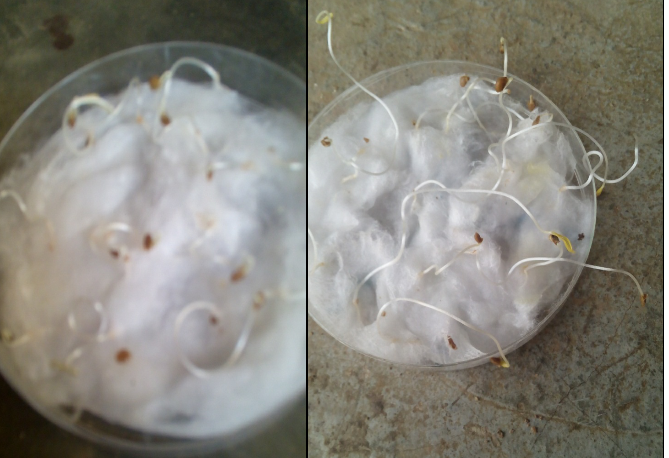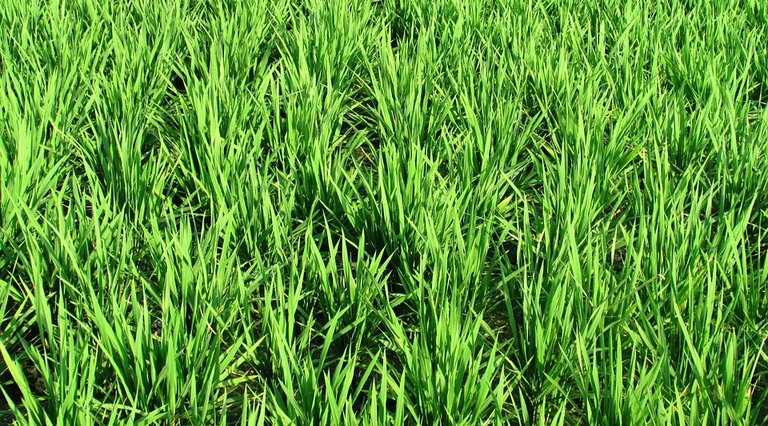The word “microorganism” always bring a thought of diseases in the mind of virtually everyone. Yes, microorganisms, when first discovered by Robert Hooke and Antoni Van Leeuwenhoek were found to be the backbone of the cause of infectious diseases source. But the advancement of technology has exploited and improved its use for other course other than causing diseases.
In this post, I will be writing on the application of microorganisms in improving the growth of crops. These types of microbes can either be a Fungi or Bacteria. Though fungi have been successfully used in plant growth promotion, the use of bacteria is more researched. However, for those who are not familiar with this term, microorganisms are used to describe microscopic organisms such as bacteria, virus, protozoa and fungi.

The emergence of molecular microbiology/Biotechnology/Genetic engineering has opened up numerous applications of microorganisms. Modern day science now use microbes in treating certain diseases (Antibiotics), cleaning of the environment (Bioremediation), Control of Plant pests/diseases (Biopecticides/Biocontrol), Plant growth promotion (Biofertlizers), Biological warfare (Bioweapon), Production and Preservation of food (as in Lactic acid Bacteria for Dairy Products), Production of beverages (as in the fermentation of sugars by yeasts), Production of Organic Acids, vitamins, enzymes, steroids, dextrans etc.
However, the persistent use of chemical fertilizers by modern day farmers to promote plant growth has recorded a long time adverse effect and is now a major challenge to plant, human health and the environment. The search for an efficient alternative might be the reason for the development of Plant Growth-Promoting Microorganisms which have now been widely tested on field plantations and then released for commercial use.

Plant Growth-Promoting Microbes (PGPM) are heterogeneous group of microorganisms that are found in specific region of a plant and responsible for its improvement either directly and /or indirectly source.
By direct promotion, it means that the plant is enriched with substances naturally produced by the microorganisms while indirect promotion involves other form of enrichment other than the direct promotion.
Most times these microorganisms does this by colonizing the rhizosphere (soil around the root), rhizoplane (plant root) and the endosphere thereby influencing the soil's health resulting in increased plant growth and development. Plant roots have several functions needed for its success, some of which are storage of nutrients, providing support for plants to stand erect and transportation of essential materials from the root to other parts of the plant.
More importantly, it has the ability to secrete and store a vast array of compounds known as root exudates. These root exudates comprises of beneficial compounds such as vitamins, ions, minerals, free oxygen, mucilage, water, primary and secondary metabolites. They are secreted in the rhizosphere, rhizoplane and endosphere source; however, the rhizosphere has been the best site of the plant to isolate plant growth promoting microbes.
Microorganisms and its application for Plant Growth
Plant Growth Promoting microorganisms are those that supply nutrition to the associated plant. They have now been formulated into substances that contain microbes which when introduced into crops, soil, or seed promote growth. This is done by colonizing the interior of the plants thereby supplying the plants enough nutrients through different principles known as biological nitrogen fixation, phosphate solubilization, production of phytostimulating compounds etc.

1. Biological Nitrogen:
Microorganisms found in the rhizosphere, rhizoplane and the endosphere have been found to fix atmospheric nitrogen into the soil so that they can be readily used by the host plants. This was confirmed during differential gene expression carried out by Nogueira et al 2001 source whose result showed an upregulation of genes during plant-microbes interaction.
Microorganisms that have been confirmed to fix atmospheric nitrogen into the soil are Rhizobium, Azotobacter, Azospirillum, Nostoc, Azoarcus, Bacillus, Derxia, Enterobacter, Herbaspirillum, Klebsiella, Pseudomonas, Seratia etc. These microbes have been successfully used plants duch as rice, tomato, pepper, maize, millet, sorghum etc source
2. Phosphate Solubilization
Certain microorganisms have been found to solubilize phosphate, the second most limiting compound for the growth of plants. These microbes are unique because of their ability to convert insoluble phosphate into the utilizable form for plants. This is possible through the production of organic acids by these microbes.
Microbes that have been found to solubilize phosphate belongs to the genera Enterobacter, Pseudomonas, Azotobacter, Burkholderia, Citrobacter etc. Theses microbes are also found to be more efficient when used in combined form than their individual form source
3. Production of phytostimulating compounds
Plant growth-promoting microorganisms are also unique in their manufacture of compounds found to stimulate plant growth. Such phytohormones as the auxin, gibberellins and cytokinins are essential for the growth of specific regions of a plant.
For example, PGPM produces Auxin which readily secrete Indole Acetic Acid that help to improve the lateral root growth formation, Gibberellins is responsible for plant germination, stem elongation, dormancy, flowering and fruit ripening while cytokinins are responsible for cell growth and differentiation source. The microbes that have been found to produce phytostimulating substances belongs to genera Arabidopsis, Bacillus, Azospirillum etc
Conclusion
The field assay of plant growth promoting has been tested in-vitro, in-vivo and on field. These innovative advancement led to its success when tested in a greenhouse and field trials of these microbes. This novel outcome led to the production of microbial products which have now been commercialized and sold to farmers in place of the harzardous chemical fertlizers
Thank you for Reading
All Images Used In This Article, Are Linked To The Respective Owners

| REFERENCES |
● Akintokun, A.K., Taiwo, M.O., Akintokun, P.O and Obuotor T.M. 2016. Screening of indigenous Plant Growth-Promoting Bacterial Strains for enhancing growth of Tomato (Lycopersicon esculentum Mill.) in Nigeria. Journal of Global Agriculture and Ecology. 6(2).127-135.
● Andress P. Pontes, Rocheli de Souza, Camille E. Granada, Luciane M.P. Passaglia3 Screening of plant growth promoting bacteria associated with barley plants (Hordeum vulgare L.) cultivated in South Braziliota Neotrop. vol.15 no.2 Campinas 2015 Epub June 19, 2015 http://www.scielo.br/scielo.php?script=sci_arttext&pid=S1676-06032015000200108
● History of microorganisms https://www.britannica.com/science/microbiology
● Luciana Gabriel Nogueira, Ronaldo Honorato Barros Santos, [...], and Edecio Cunha-Neto 2001. Myocardial Gene Expression of T-bet, GATA-3, Ror-γt, FoxP3, and Hallmark Cytokines in Chronic Chagas Disease Cardiomyopathy: An Essentially Unopposed TH1-Type Response https://www.ncbi.nlm.nih.gov/pmc/articles/PMC4134835/
● Plant Hormones and their functions https://biologywise.com/plant-hormones-their-functions

If you write STEM (Science, Technology, Engineering, and Mathematics) related posts, consider joining #steemSTEM on discord here. If you are from Nigeria, you may want to include the #stemng tag in your post. You can visit this blog by @stemng for more details. You can also check this blog post by @steemstem here and this guidelines here for help on how to be a member of @steemstem. Please also check this blog post from @steemstem on proper use of images devoid of copyright issues.


This post has been voted on by the steemstem curation team and voting trail.
There is more to SteemSTEM than just writing posts, check here for some more tips on being a community member. You can also join our discord here to get to know the rest of the community!
Hi @teemike!
Your post was upvoted by utopian.io in cooperation with steemstem - supporting knowledge, innovation and technological advancement on the Steem Blockchain.
Contribute to Open Source with utopian.io
Learn how to contribute on our website and join the new open source economy.
Want to chat? Join the Utopian Community on Discord https://discord.gg/h52nFrV